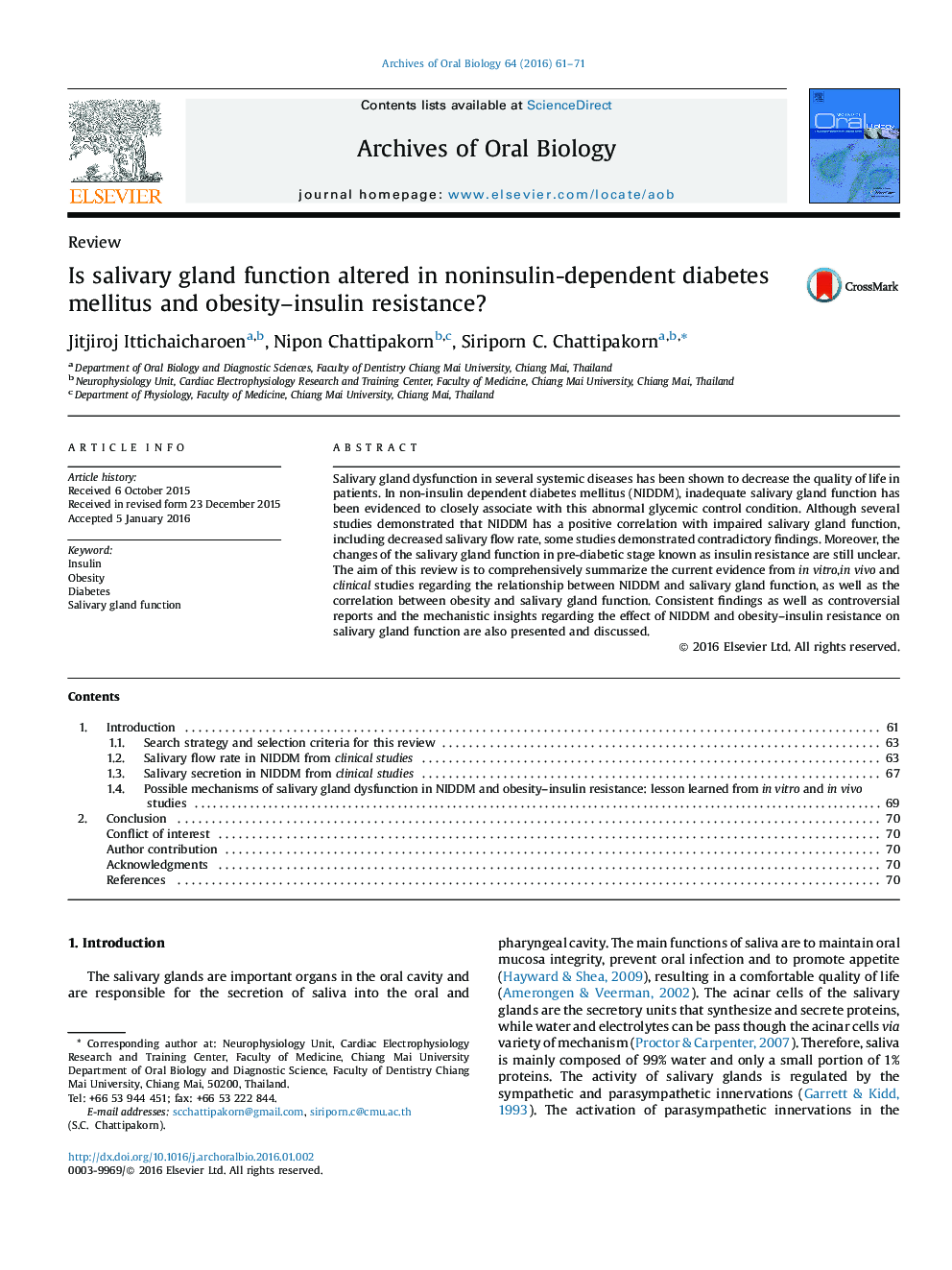| کد مقاله | کد نشریه | سال انتشار | مقاله انگلیسی | نسخه تمام متن |
|---|---|---|---|---|
| 3120709 | 1583289 | 2016 | 11 صفحه PDF | دانلود رایگان |
• We report current studies of salivary gland in NIDDM and obesity–insulin resistance.
• NIDDM treated with xerogenic drugs has an impaired salivary gland function.
• Obesity–insulin resistance leads to salivary gland dysfunction.
Salivary gland dysfunction in several systemic diseases has been shown to decrease the quality of life in patients. In non-insulin dependent diabetes mellitus (NIDDM), inadequate salivary gland function has been evidenced to closely associate with this abnormal glycemic control condition. Although several studies demonstrated that NIDDM has a positive correlation with impaired salivary gland function, including decreased salivary flow rate, some studies demonstrated contradictory findings. Moreover, the changes of the salivary gland function in pre-diabetic stage known as insulin resistance are still unclear. The aim of this review is to comprehensively summarize the current evidence from in vitro, in vivo and clinical studies regarding the relationship between NIDDM and salivary gland function, as well as the correlation between obesity and salivary gland function. Consistent findings as well as controversial reports and the mechanistic insights regarding the effect of NIDDM and obesity–insulin resistance on salivary gland function are also presented and discussed.
Journal: Archives of Oral Biology - Volume 64, April 2016, Pages 61–71
